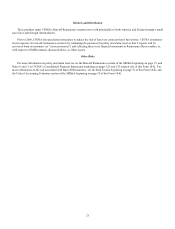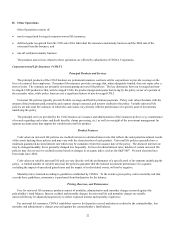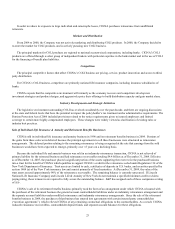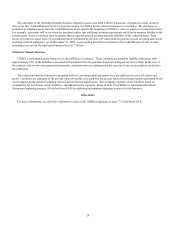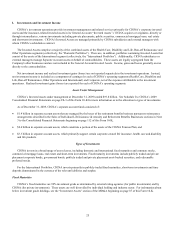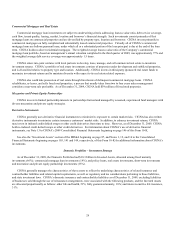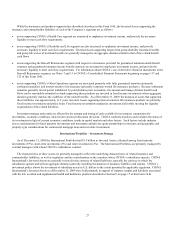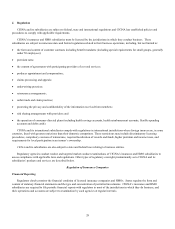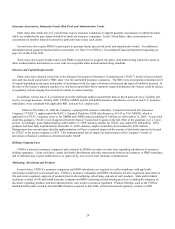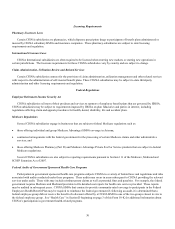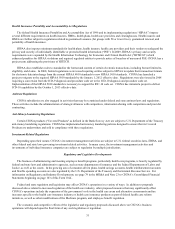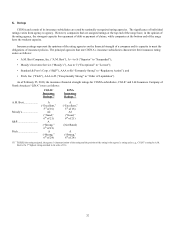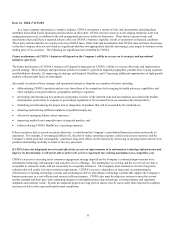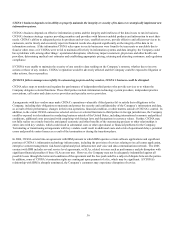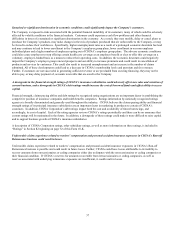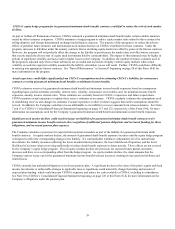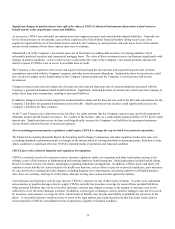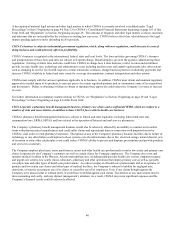Cigna 2009 Annual Report Download - page 51
Download and view the complete annual report
Please find page 51 of the 2009 Cigna annual report below. You can navigate through the pages in the report by either clicking on the pages listed below, or by using the keyword search tool below to find specific information within the annual report.31
Health Insurance Portability and Accountability Act Regulations
The federal Health Insurance Portability and Accountability Act of 1996 and its implementing regulations (“HIPAA”) impose
several different requirements on health insurers, HMOs, health plans, health care providers and clearinghouses. Health insurers and
HMOs are further subject to regulations related to guaranteed issuance (for groups with 50 or fewer lives), guaranteed renewal, and
portability of health insurance.
HIPAA also imposes minimum standards for health plans, health insurers, health care providers and their vendors to safeguard the
privacy and security of individually identifiable or protected health information (“PHI”). In 2009, HIPAA’s privacy and security
requirements were expanded by the Health Information Technology for Economic and Clinical Health Act (“HITECH”) which
enhanced penalties for HIPAA violations and required regulated entities to provide notice of breaches of unsecured PHI. CIGNA has a
project team addressing the provisions of HITECH.
HIPAA also establishes rules to standardize the format and content of certain electronic transactions, including but not limited to,
eligibility and claims. In 2008, federal regulations were issued requiring entities subject to HIPAA to update their transaction formats
for electronic data interchange from the current HIPAA 4010 standards to new HIPAA 5010 standards. CIGNA has launched a
project to migrate to the required HIPAA 5010 standards by the January 1, 2012 effective date. Regulations were also issued in 2008
requiring a conversion from the ICD-9 diagnosis and procedure code set to the ICD-10 diagnosis and procedure code set.
Implementation of the HIPAA 5010 standards is necessary to support the IDC-10 code set. CIGNA has initiated a project to deliver
ICD-10 capabilities by the October 1, 2013 effective date.
Antitrust Regulations
CIGNA subsidiaries are also engaged in activities that may be scrutinized under federal and state antitrust laws and regulations.
These activities include the administration of strategic alliances with competitors, information sharing with competitors and provider
contracting.
Anti-Money Laundering Regulations
Certain CIGNA products ("Covered Products" as defined in the Bank Secrecy Act) are subject to U.S. Department of the Treasury
anti-money laundering regulations. CIGNA has implemented anti-money laundering policies designed to ensure that its Covered
Products are underwritten and sold in compliance with these regulations.
Investment-Related Regulations
Depending upon their nature, CIGNA’s investment management activities are subject to U.S. federal securities laws, ERISA, and
other federal and state laws governing investment related activities. In many cases, the investment management activities and
investments of individual insurance companies are subject to regulation by multiple jurisdictions.
Regulatory and Legislative Developments
The business of administering and insuring employee benefit programs, particularly health care programs, is heavily regulated by
federal and state laws and administrative agencies, such as state departments of insurance and the federal Departments of Labor and
Justice, as well as the courts. In the growing area of consumer-driven plans, health savings accounts, health reimbursement accounts
and flexible spending accounts are also regulated by the U.S. Department of the Treasury and the Internal Revenue Service. For
information on Regulatory and Industry Developments, see page 79 in the MD&A and Note 23 to CIGNA’s Consolidated Financial
Statements beginning on page 163 of this Form 10-K.
Federal and state regulation and legislation may affect CIGNA’s operations in a variety of ways. In addition to proposals
discussed above related to increased regulation of the health care industry, other proposed measures that may significantly affect
CIGNA’s operations include the expansion of the government’s role in the health care arena and alternative assessments and tax
increases specific to the health care insurance industry or health care insurance products as part of federal health care reform
initiatives, as well as other modifications of the Medicare program, and employee benefit regulation.
The economic and competitive effects of the legislative and regulatory proposals discussed above on CIGNA’s business
operations will depend upon the final form of any such legislation or regulation.


